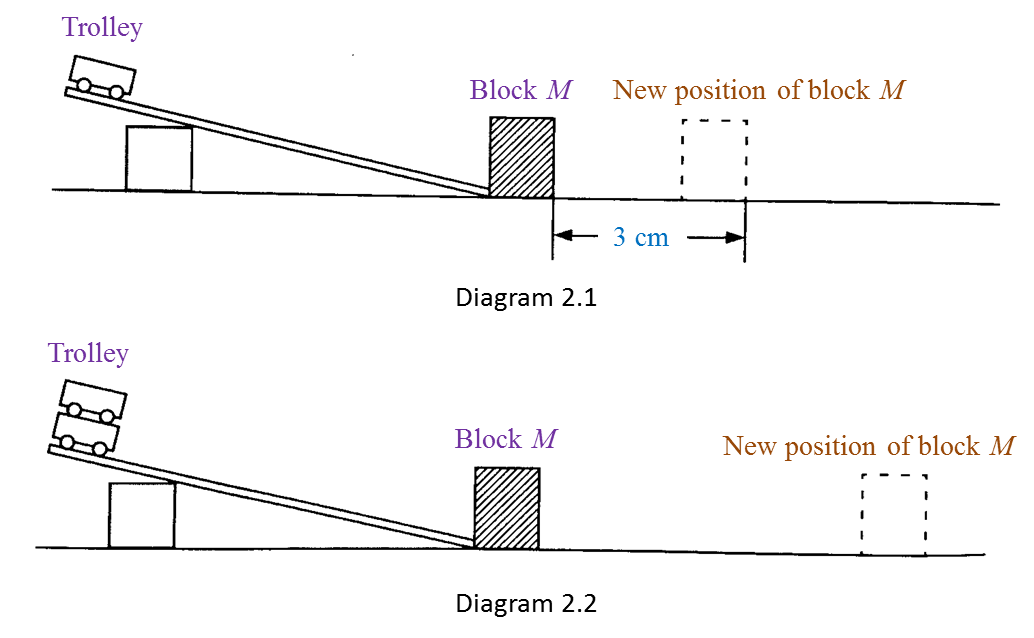Question 1:
Diagram 1 shows an experiment to study Bernoulli’s Principle.

(a)(i) State one observation of the water level in Diagram 1. [1 mark]
(ii) State one inference that can be made based on the observation in (a)(i). [1 mark]
(b) State the responding variable in this experiment. [1 mark]
(c) Based on this experiment, state the operational definition for Bernoulli’s Principle. [1 mark]
(d) Mark (\/) in the boxes provided to show the apparatus where the Bernoulli’s Principle is applied. [1 mark]

Answer:
(a)(i)
- The water level in the vertical tube Y is the lowest.
- The water level in the vertical tube X is the highest.
(any one)
(a)(ii)
- The water at the base of the vertical tube Y exerts the lowest pressure.
- The water at the base of the vertical tube X exerts the highest pressure.
(any one)
(b) The pressure exerted by the moving water.
(c) Bernoulli’s Principle states that pressure in a liquid decreases when the speed of the liquid increases.
(d)

Diagram 1 shows an experiment to study Bernoulli’s Principle.

(a)(i) State one observation of the water level in Diagram 1. [1 mark]
(ii) State one inference that can be made based on the observation in (a)(i). [1 mark]
(b) State the responding variable in this experiment. [1 mark]
(c) Based on this experiment, state the operational definition for Bernoulli’s Principle. [1 mark]
(d) Mark (\/) in the boxes provided to show the apparatus where the Bernoulli’s Principle is applied. [1 mark]

Answer:
(a)(i)
- The water level in the vertical tube Y is the lowest.
- The water level in the vertical tube X is the highest.
(any one)
(a)(ii)
- The water at the base of the vertical tube Y exerts the lowest pressure.
- The water at the base of the vertical tube X exerts the highest pressure.
(any one)
(b) The pressure exerted by the moving water.
(c) Bernoulli’s Principle states that pressure in a liquid decreases when the speed of the liquid increases.
(d)







 Figure 1.1
Figure 1.1 Figure 1.2
Figure 1.2 Figure 1.3
Figure 1.3

